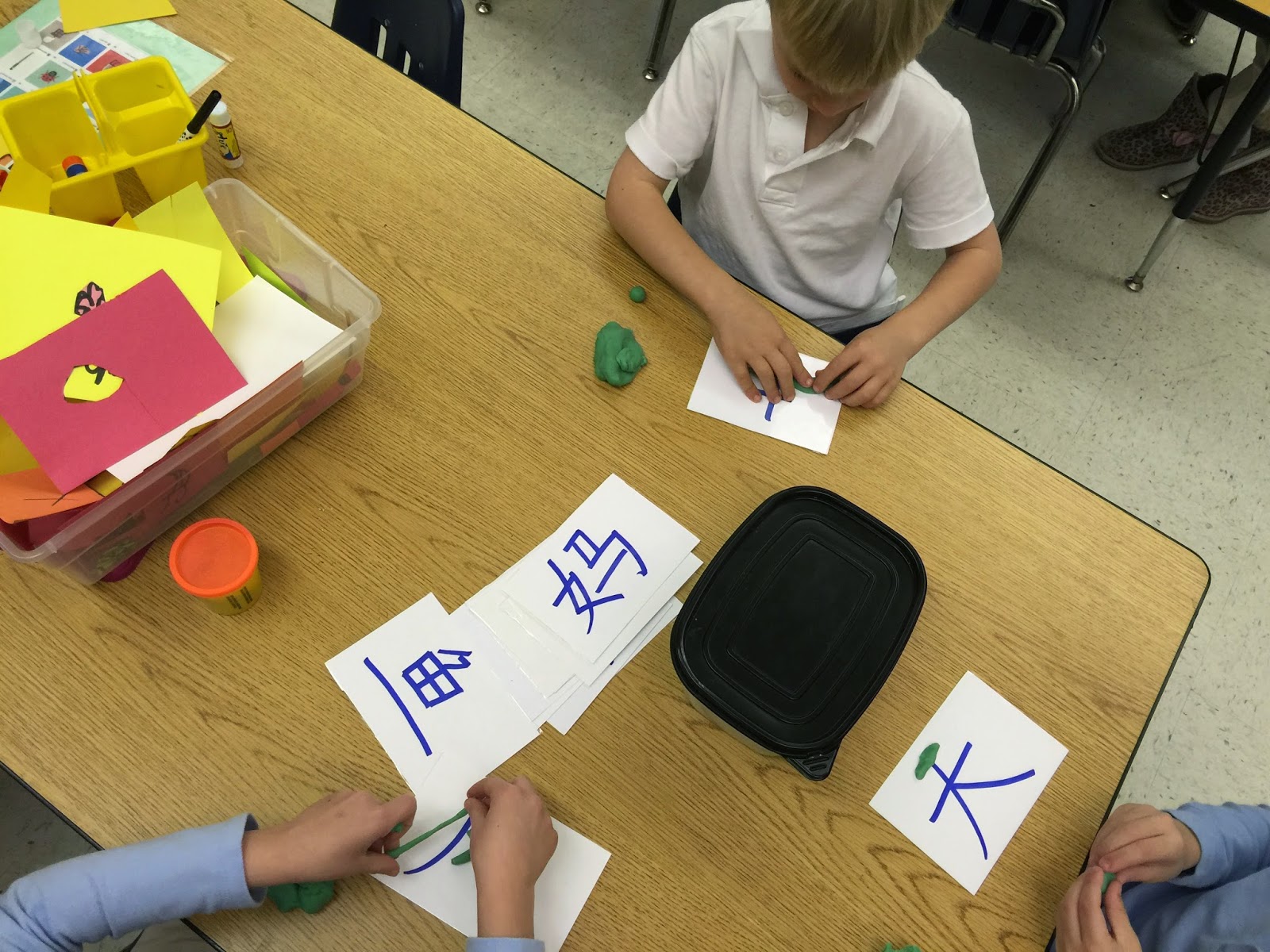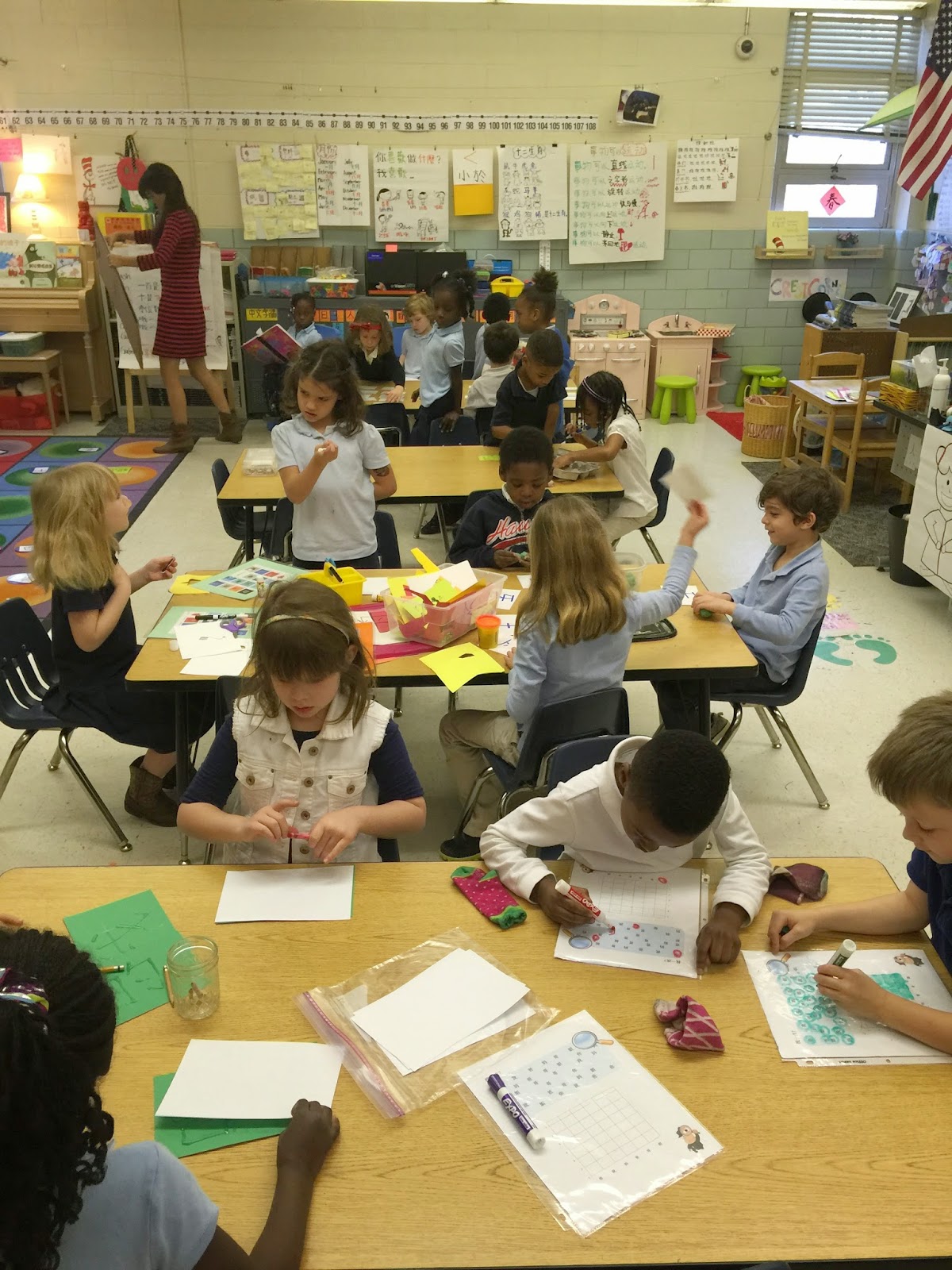
This blog post is dedicated to Chinese Word Study. Teaching in the US is a completely different battle than teaching in Taiwan. It's all an exciting learning experience for me still even though I have been teaching for eight years. Before I became a Mandarin immersion teacher, I taught lots of ELL students whose first language was not English. The commonality between teaching ELL and Mandarin immersion is that both groups require lots of TPR (Total Physical Response - a language teaching method developed by James Asher, a professor emeritus of psychology at San José State University. It is based on the coordination of language and physical movement.) and hands on learning experiences.
Chinese Word Study is essential in Mandarin because every word is basically a Sight Word. There is no phonics attached to the characters, so all that is required is memorization by sight. Several of the CWS centers are created based on sight words games on Pinterest, but some are based on teaching experience and imagination!
Race to Win
The students roll dice to advance or back-up.
They have to say the words, and if they do not know the words, they may ask the other friend to help.
Rub the Word
I wrote the words on the card stock using a hot glue gun.
The students rub it on a piece of paper using a crayon.
Bingo
Two students each receive a laminated card and a pom pom matched to the color of the card.
Play-doh Word Building
Building words using play-doh. A fine motor skill and a fun way to introduce the complexity of characters.
Character Art Making
Mandarin characters are pictorial, that is, words are originated from pictures or according to objects' characteristics. The center allows children to be creative and have fun learning the words through art making.
Character Charting
Chart how many times a character appears in the box. This is both a sight word skill and a math skill.
Chopstick Pom Poms
Students learn to use chopsticks while building words, win win!
Geo-board Writing
Geo-boards are great for 'writing' characters.
Learn Mandarin Numbers
I love these Mandarin character dice that I purchased at a conference. In the beginning of the year, the students learned to read the numbers while counting. Another way of incorporating literacy and math.
Scramble!
Students scramble the words to make sense of the sentence. A great way to assess students' understanding in sentence structure.
Reading
Not a CWS center, but I love these hand-made pointers made out of popsicle sticks and tabs. A way to practice one-to-one coorespondance skill - so important at this age for both literacy and math!
Independent Reading
Students reading or singing songs independently. These have been taught during Shared Reading so there is nothing new or confusing.
Engaged Kindergarteners during center!






















